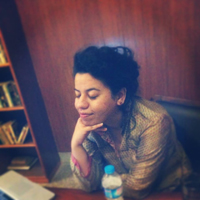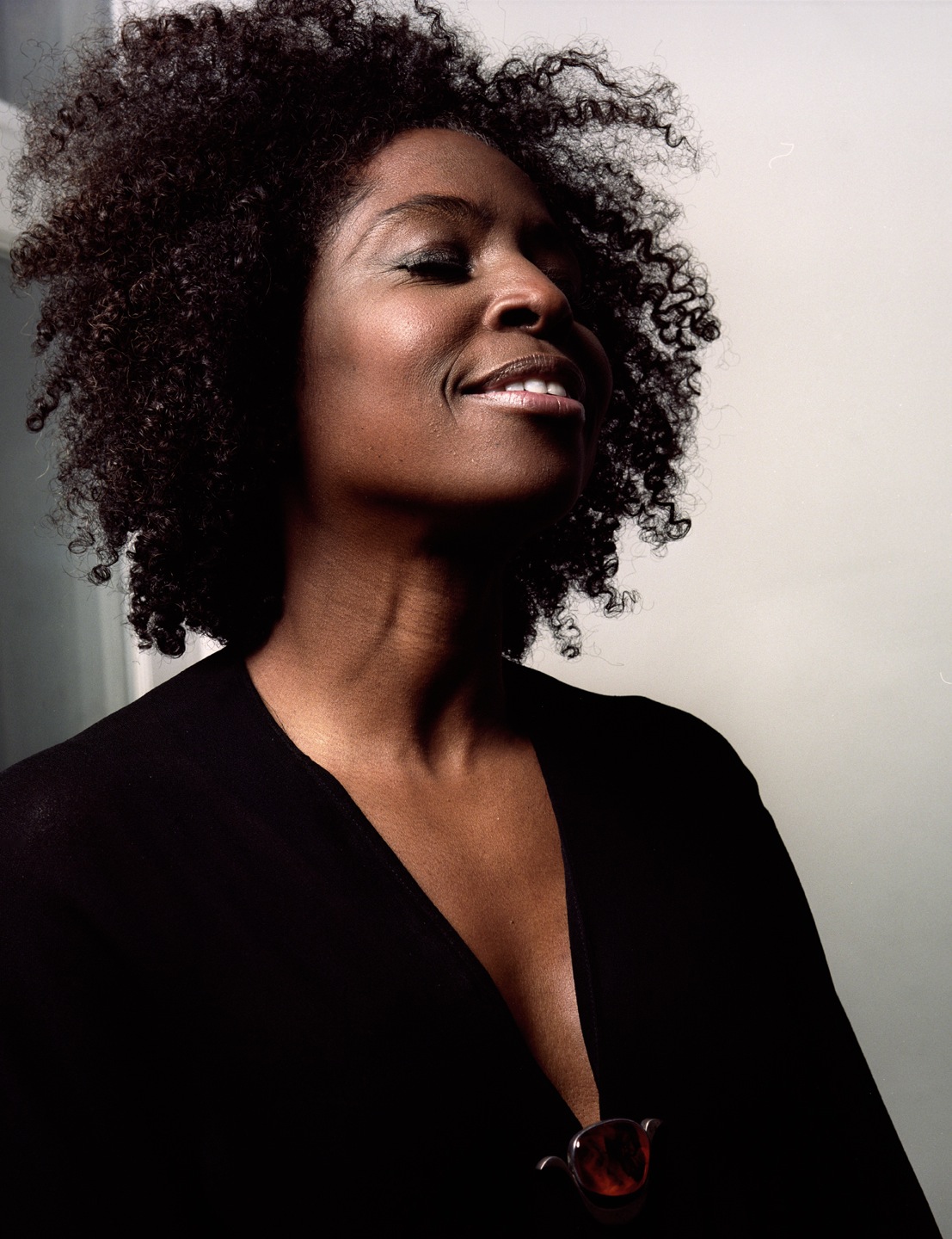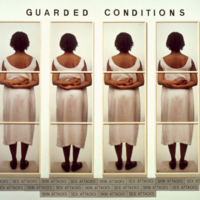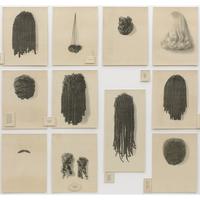More about Lorna Simpson
Works by Lorna Simpson

Contributor
Lorna Simpson must feel so good to have a bunch of fancy museums are clamoring to buy her artwork.
But she pretty much hit it out of the park when Vogue wanted to write a feature on her. Speaking of which, Lorna Simpson is just one of those lucky gals whose work demands attention from every culturally relevant institution, be it a gallery space or a fashion magazine.
How did Simpson become so important that even Vogue felt like writing a piece about her? I know what you’re thinking: it’s because she’s literally done a piece called Hair. Did Vogue want to do a spread titled “Hairstyles on Fleek, by Actual Artists” featuring Simpson’s selection of wigs? That would’ve been cute, but no. Simpson’s work has been touching on subjects like identity, race and gender since the 1980s and hair has been making regular appearances in her photographs as a symbol of these issues.
Simpson also often juxtaposes text (of sinister yet humorous proportions) with her photographic works. Are you thinking Barbara Kruger? Stylistically, you could go there, but personally I think Lorna Simpson goes further than Kruger because her text + photo pieces are not just about women, but are also discussing issues of race as well. More specifically: African American women. Probably why her stuff was also chosen for the Venice Biennale in 1990. FYI, she was also the first ever African American female artist to shown at the VB. Couldn’t have picked a better artist to showcase your racial diversity, Venice Biennale. Well played.
Sources
- Vogue, “Lorna Simpson on Hair and Her New Exclusive Ebony Collages”, http://www.vogue.com/article/lorna-simpson-artist-hair-ebony-collages-n… (Last accessed February 25, 2017)
- Wikipedia contributors, "Lorna Simpson," Wikipedia, The Free Encyclopaedia, https://en.wikipedia.org/w/index.php?title=Lorna_Simpson&oldid=767831788 (Last accessed February 28, 2017)
Featured Content
Here is what Wikipedia says about Lorna Simpson
Lorna Simpson (born August 13, 1960) is an American photographer and multimedia artist whose works have been exhibited both nationally and internationally. In 1990, she became one of the first African-American woman to exhibit at the Venice Biennale. She came to prominence in the 1980s and 1990s with photo-text installations such as Guarded Conditions and Square Deal that questioned the nature of identity, gender, race, history and representation. Simpson continues to explore these themes in relation to memory and history using photography, film, video, painting, drawing, audio, and sculpture.
Check out the full Wikipedia article about Lorna Simpson












